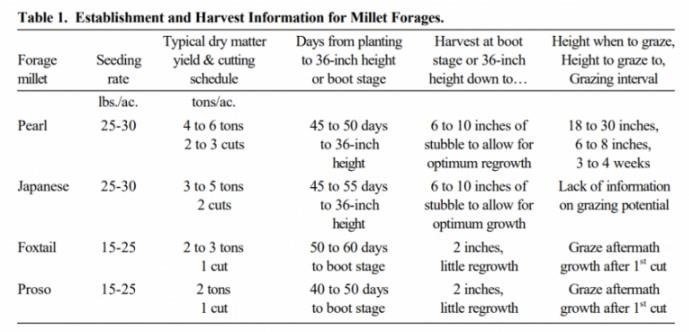By Rebecca Vittetoe
With the cool and wet spring in 2022, there haven’t been many opportunities to seed forages. Looking at the calendar date, is it getting too late to plant forages? The short answer is that there is still some time to seed forages this spring. While the typical planting window is late February (frost seeding) through late April, planting forages in May can still be successful. For areas south of I-80, agronomists suggest seeding by the middle of May, whereas north of I-80 could get by seeding even a little later in May.
The forecast is showing that warmer weather is just around the corner. Shallow-seeded forages will start germinating and growing quickly with just a few warm days. Below are some tips if you plan to seed forages this spring.
- Seed-to-soil contact: When seeding forages, seed-to-soil contact is critically important. With the wetter soil conditions, be careful in tilled soils to avoid planting into cloddy soil.
- Seeding method: Drilling spring forages is the preferred seeding method, but broadcast seeding can still be successful if wet conditions prevent field access with heavier equipment. Broadcast seeding may require a higher seeding rate (10 to 15% higher) to account for poorer seed-to-soil contact that can reduce germination. Another consideration with broadcast seeding is the potential for runoff from heavy rainfall events.
- Companion crop: If you decide to use a companion crop with a later forage seeding date, it is suggested to cut the seeding rate of the companion crop in half and to mow or clip the new seeding several times early on to allow light to reach the small legume and grass seedlings you are trying to get established.
- Weed competition: When seeding later, expect weeds to germinate and grow rapidly. Additionally, a burndown herbicide may be needed prior to seeding to control winter annuals and other early-emerging weeds.
If the weather does not cooperate and allow for forages to be seeded this spring, one option to consider if you are in need of a forage this season is planting a warm-season annual (i.e. sorghum, sorghum sudangrass, millets, etc.). Ideally, for warm-season annuals, soil temperatures should consistently be 60°F or warmer. Therefore, it is recommend waiting to seed warm season annual forages until at least the first of June. Seed for warm season annuals may be in short supply this year, so check with your seed supplier on availability.
If you decide to switch and plant a warm season annual instead keep in mind some species are better suited for grazing rather than baling. If you want to put up the forage as dry hay, foxtail millet and Japanese millet are likely your best options.

We can utilize these warm season annuals over the summer as forage, and then potentially try and seed the original intended forage later this summer or wait until next spring. If you wait to seed until next spring, remember seed is perishable. Make sure to store seed in a cool and dry place. It is also recommended to do a germination test on carryover seed before planting in case seeding rates need to be adjusted due to a reduce germination on the seed.
Source : iastate.edu